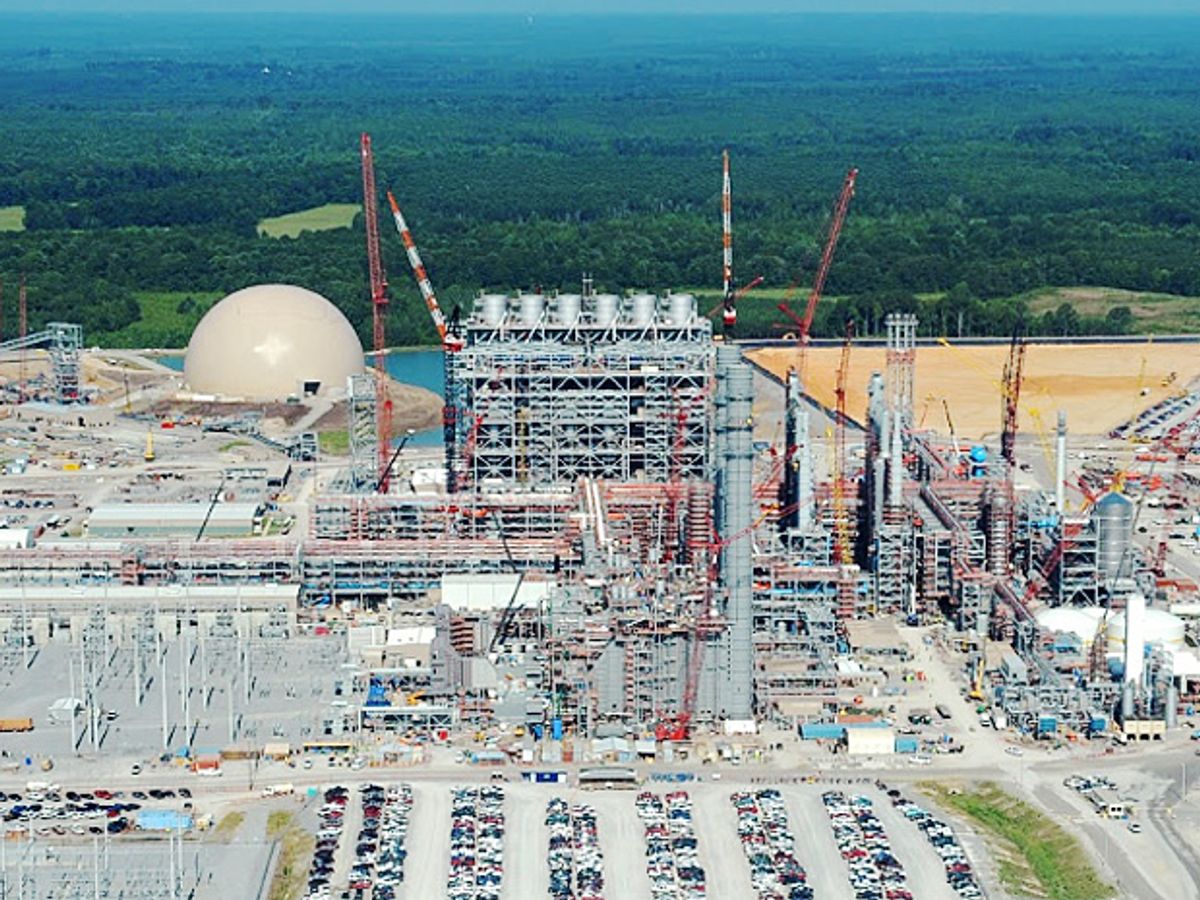The U.S. Environmental Protection Agency’s (EPA’s) long-expected rules for carbon emissions from new coal-fired power plants have thrown into sharp relief the question of whether carbon capture and sequestration or storage (CC&S) can be described as “demonstrated” and ready for commercialization. This is because the new regulations declare, in effect, that no new coal plant can be built without CC&S.
The EPA is reported to have alluded to four CC&S plants and projects in connection with its coal regs—in California, Mississippi, Texas, and Saskatchewan, Canada—though I cannot find that statement in the press release, technical backgrounders or detailed report on regulatory impacts issued with the new coal regs on 20 Sept. But surely the most substantial and furthest along of the U.S. projects is the IGCC plant that Southern Company is building in Kemper, Mississippi [photo].
Integrated gasification combined-cycle technology involves coal gasification and then the separation of carbon dioxide from other flue gases, including those containing nitrogen. Can Kemper be considered a demonstration of a technology ready for commercialization? By no stretch of the imagination. The plant is being built with a $270 million contribution from the U.S. Department of Energy. And Southern Company has issued a statement saying the Kemper technology “cannot be consistently replicated on a national scale.”
DOE originally hoped to see IGCC tested and demonstrated at a plant to be built near Tampa, Florida, but the local utility lost interest. The Energy Department thereupon helped get the demonstration transferred to Mississippi. The government subsequently changed horses mid-race. FutureGen, which was to have sponsored the major U.S. demonstration of IGCC, collapsed toward the end of George W. Bush’s presidency. The Obama administration decided early on to resuscitate the project, but switched to an alternative technology known as oxycombustion or oxyfiring. (In oxyfiring, nitrogen is removed from air pre-combustion, which simplifies separation of carbon dioxide post-combustion.) The change suggested that IGCC was suffering some loss of confidence at Obama’s DOE as well.
Outside North America, the important work being done on CC&S is also pre-commercial. Norway and its national oil company, Statoil, having declared in the past that depleted North Sea oil fields contain enough storage capacity to sequester all the carbon dioxide emitted from European power plants, have a major R&D facility at Mongstad. On 23 Sept., however, the government and Statoil, while reaffirming their commitment to research there, pulled the plug on upgrading Mongstad to commercial-scale.
Sweden’s national utility Vattenfall has been testing oxycombustion technology at a power plant it owns in eastern Germany, at Schwarze Pumpe. As described in an MIT summary, “Vattenfall announced in November 2009 that it was achieving nearly 100 percent CO2 capture at Schwarze Pumpe. As of the beginning of June 2010, Schwarze Pumpe has now been in operation over 6500 hours during the last one and a half years… Vattenfall is continuously rebuilding and developing this unit.” Vattenfall plans to continue operations for ten years.
All that is well and good, but of course it does not add up to having a demonstrated technology ready for commercial deployment. Five years ago, Spectrum declared Schwarze Pumpe a “winner,” not because it necessarily would lead to a usable technology, but because Vattenfall at least was trying seriously to find one.
Photo: XTUV0010/Wikipedia



